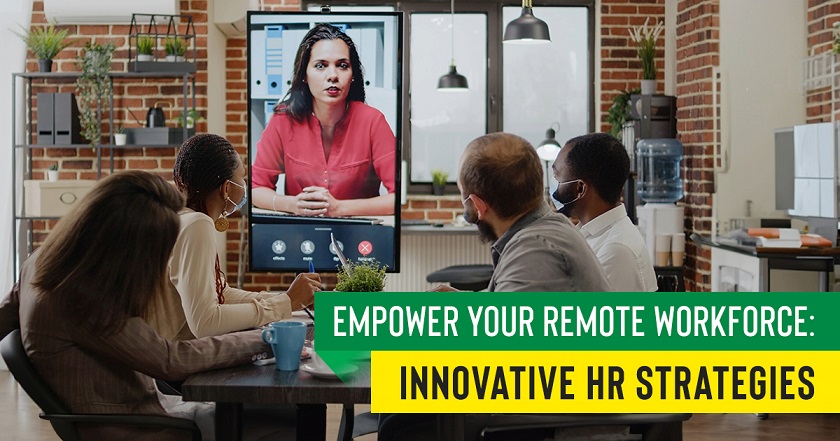Are you struggling to find the perfect fit for your organization? The process of recruiting the right employee can be challenging, but it’s also a crucial determinant of your company’s future prosperity. With competition for top talent fiercer than ever, it’s essential to have a strategic and well-organized recruitment plan in place.
This comprehensive guide is specifically crafted to provide you with step-by-step insights into the intricate process of how to recruit employees effectively. By following these proven strategies, you’ll be equipped with the tools needed to identify and attract the best candidates for your organization.
Preparation for How To Recruitment Employees
Unlocking the potential of your organization begins with understanding the intricate interplay between the specific requirements of a role and the unique culture of your company. Finding the perfect candidate is not just about matching skills and experience, but also about aligning values and fitting seamlessly into the fabric of your organization.
Below we will delve into the essential steps for preparing to recruit employees effectively, focusing on how a deep understanding of both role requirements and organizational culture is pivotal in securing top talent.
Understanding Your Needs
When preparing for recruitment, understanding the specific role that needs to be filled is crucial. By analyzing the skills and experience required for the position, you can ensure that the right candidates are targeted. Consider how this role fits into the larger picture of your company’s objectives and overall structure. This perspective will help you not only define the job requirements but also envision how it contributes to the organization’s success.
Moreover, assessing the current team dynamics and identifying any skill gaps can further inform your approach to filling the role. By recognizing how this new position will complement and enhance existing capabilities, you can strategically align your recruitment efforts with long-term organizational goals.
Additionally, exploring emerging industry trends and technological advancements can offer valuable insights into potential new skill sets that may be essential for driving innovation within your company. Ultimately, a thoughtful analysis of your needs sets the stage for a successful recruitment process that aligns with both immediate requirements and future aspirations.
Creating a Job Description
Crafting a job description is akin to laying the foundation for finding the right candidate. By clearly outlining the responsibilities, qualifications, and expectations, you not only attract suitable candidates but also set clear benchmarks for evaluating their fit. A well-crafted job description acts as a compass, guiding both the employer and the candidate towards mutual understanding and alignment.
Moreover, a meticulously worded job description serves as an initial test for candidates’ comprehension and attention to detail. It provides a glimpse into their ability to analyze and interpret information while showcasing their interest in the role. Additionally, revisiting and refining job descriptions periodically can help organizations stay attuned to evolving market trends, technological advancements, and changing business needs.
In essence, a comprehensive job description doesn’t just communicate what’s expected from potential employees; it also demonstrates an organization’s commitment to clarity, transparency, and professionalism in its recruitment process. This approach fosters better matches between employers and employees by aligning expectations right from the outset.
Setting Up a Recruitment Plan
Creating a strategic recruitment plan is not just about finding the best talent, but also about presenting your company in the best light. To attract top-tier candidates, it’s crucial to allocate budgets for advertising across various platforms such as social media, job boards, and networking events. However, it’s equally important to set realistic timelines for each stage of the recruitment process to ensure that potential hires are not lost due to delays.
The strategic plan should also include clear descriptions of the roles and responsibilities associated with each position. This will help standardize the hiring process and maintain transparency with both candidates and internal stakeholders.
Additionally, outlining a structured onboarding process in advance can signal professionalism and entice candidates who are looking for a supportive work environment from day one. By setting up a comprehensive recruitment plan with these elements in place, companies can maximize their chances of securing top talent while demonstrating their commitment to employee success.
Sourcing Candidates
Expanding your search to a wide pool of candidates can significantly enhance your chances of finding the perfect fit for your organization. With a larger, diverse candidate pool, you open up opportunities to tap into new talent pools and find individuals with unique skills and experiences that could bring invaluable perspectives to your team. By casting a wider net, you are not only increasing the odds of finding highly qualified candidates but also promoting diversity and inclusion within your workforce.
Moreover, widening your candidate search allows you to identify hidden gems who may not have otherwise crossed your radar. These individuals may possess the drive, creativity, and potential that perfectly align with the needs of your organization.
Embracing a broad approach to sourcing candidates demonstrates a commitment to exploring all possibilities and considering a more comprehensive array of qualifications and capabilities. Ultimately, it fosters an environment where innovation thrives as fresh perspectives come together to drive growth and success.
Job Advertising
When it comes to job advertising, an effective strategy involves utilizing a multi-platform approach. By casting a wide net across job boards, company websites, and industry publications, employers can reach a diverse pool of candidates who may not be actively seeking a new position. This approach allows for greater visibility and access to potential talent that might otherwise go unnoticed.
Moreover, leveraging various platforms can also enhance the employer brand by showcasing the company’s commitment to reaching out to candidates where they are most active. Job seekers often engage with different types of platforms during their search, so by diversifying your advertising efforts, you can demonstrate flexibility and adaptability in meeting potential candidates where they are most comfortable.
Additionally, using a range of platforms provides the opportunity to tailor messaging according to the specific audience of each platform. This allows for more personalized and targeted communication which is essential in grabbing attention in today’s competitive job market. Embracing this multi-platform approach not only broadens the reach but also enhances the overall effectiveness of job advertising efforts.
Social Media and Networking
As the landscape of recruitment continues to evolve, leveraging social media platforms and professional networking events has become a crucial strategy for spreading the word about your job vacancy. Social media provides an effective way to reach a wide audience, tapping into networks that may not be accessible through traditional recruitment channels. Using platforms such as LinkedIn, Twitter, and Facebook allows recruiters to engage with potential candidates on a more personal level, showcasing the company culture and values to attract top talent.
Additionally, participating in professional networking events offers the opportunity to connect with industry professionals and prospective candidates in a more organic setting. These events create a platform for meaningful interactions and relationship-building that can lead to valuable referrals and introductions. By actively engaging in these events, recruiters can gain insights into the latest trends in their industry while also promoting their job vacancies directly to individuals who are actively seeking new opportunities.
In today’s competitive recruitment landscape, utilizing social media platforms and attending professional networking events is essential for reaching qualified candidates effectively. By harnessing the power of these tools, recruiters can amplify their organization’s presence within relevant communities while also engaging with potential hires in a more personalized manner. This approach not only increases visibility but also fosters authentic connections that could lead to successful long-term hires.
Recruitment Agencies
Recruitment agencies can be a game-changer when it comes to filling specialized roles within your organization. These agencies are often well-connected with niche talent pools, making it easier for them to identify and attract candidates with the exact skills and experience required for the job. By tapping into their extensive networks, you can gain access to a wider pool of qualified professionals, saving time and resources on the search process.
Moreover, recruitment agencies are adept at streamlining the hiring process, from initial candidate screening to negotiating offers. This can be especially valuable if you’re short on time or lack the expertise needed to navigate complex hiring procedures.
Additionally, their industry knowledge and insights can provide a fresh perspective on your recruitment strategy, helping you refine your approach for better results. So, consider leveraging the expertise of recruitment agencies when seeking out top-notch talent for specialized positions within your organization.
Screening Applicants
Are you ready to say goodbye to the endless cycle of interviewing unqualified candidates? The key to saving time and resources lies in establishing an effective screening process that filters out applicants who don’t meet your minimum criteria.
By implementing rigorous screening measures, you’ll ensure that only the most promising candidates advance through your hiring pipeline, saving your team valuable time and energy while also improving the overall quality of your new hires.
Reviewing Resumes
Developing an efficient system for reviewing applications is crucial in identifying top candidates. One approach is to establish clear criteria for what constitutes a promising candidate, such as relevant experience, skills, and education. Utilizing applicant tracking software can help streamline the initial screening process by automatically filtering out applications that don’t meet predetermined qualifications. Additionally, implementing a standardized scoring system can expedite the review process by objectively evaluating each candidate based on defined parameters.
Another effective strategy is to utilize pre-employment assessments or tests to further narrow down the pool of applicants. These assessments can provide valuable insights into a candidate’s abilities and aptitude for the role, helping to pinpoint the most promising individuals early in the selection process. By integrating these evaluation methods into your application review system, you can efficiently identify strong candidates while minimizing time and resources spent on less viable prospects.
Initial Interviews
Phone and video interviews can serve as efficient tools for screening applicants and narrowing down the initial interview pool. In addition to saving time and resources, these remote interviews allow recruiters to quickly assess candidates’ communication skills, professionalism, and cultural fit within the organization. Moreover, by utilizing technology for initial interviews, companies can cast a wider net when sourcing talent, reaching potential candidates beyond geographical constraints. A well-designed phone or video interview process also demonstrates an organization’s adaptability and commitment to embracing modern recruitment practices.
Furthermore, phone and video interviews provide a more inclusive approach that accommodates diverse schedules and eliminates potential biases related to in-person appearances. By leveraging these remote methods, companies can better evaluate a candidate’s ability to work autonomously while effectively communicating their qualifications.
Additionally, these virtual interactions offer an opportunity for candidates to showcase their tech-savviness and digital communication skills – attributes increasingly essential in today’s workplace. Overall, integrating phone or video interviews into the hiring process enables organizations to conduct more thorough screenings before investing in on-site meetings with promising candidates.
Assessment Tests
Assessment tests offer a crucial advantage in the screening process, providing objective data to support hiring decisions. Instead of relying solely on resumes and interviews, these tests can determine a candidate’s actual skills and potential fit for the role. By evaluating cognitive abilities, technical skills, personality traits, and cultural fit, organizations can make more informed recruitment choices.
Furthermore, assessment tests help mitigate biases in the hiring process by focusing on tangible abilities rather than subjective judgments. This approach supports diversity and inclusion efforts by ensuring all candidates are fairly evaluated based on their performance in these standardized assessments. In turn, this promotes a more equitable selection process that benefits both employers and applicants alike.
Ultimately, assessment tests provide invaluable insight into a candidate’s capabilities beyond what traditional methods can offer. Employers stand to gain by leveraging these tools to identify top talent efficiently and accurately while minimizing potential biases in the hiring process.
The Interview Process
As organizations increasingly rely on remote communication and virtual collaboration, the interview process has undergone a significant transformation. While technical skills can often be evaluated effectively through online assessments or coding challenges, assessing a candidate’s soft skills requires more than just words on a screen.
Face-to-face interviews offer an opportunity for employers to gauge a candidate’s emotional intelligence, communication style, and cultural fit within the organization—a crucial aspect often overlooked in virtual interactions.
Join us as we explore why nothing quite compares to the insight gained from meeting candidates in person during the interview process.
Conducting Effective Interviews
When it comes to conducting effective interviews, having a set list of questions for all candidates can help ensure a fair evaluation process. By asking the same questions to each candidate, you create a level playing field and make it easier to compare their responses. This approach also helps you maintain consistency in your evaluations and reduces the risk of bias influencing your decision-making.
However, it’s important to remember that while having a standard set of questions is beneficial, interviewers should still be open to allowing candidates the opportunity to showcase their unique skills and experiences. Flexibility within the interview process can lead to more insightful conversations and a better understanding of what each candidate brings to the table. While standardized questions provide structure, they should serve as a starting point rather than a strict rulebook.
Ultimately, using a set list of questions alongside thoughtful flexibility can help strike the right balance between fairness and individuality in your interview process. It’s about combining consistency with adaptability to ensure that every candidate has an equal chance to shine while being thoroughly evaluated.
Asking the Right Questions
Asking open-ended questions during the interview process is crucial for gaining insight into a candidate’s problem-solving abilities and thought processes. Closed-ended questions often limit responses to a simple yes or no, providing little opportunity for candidates to showcase their analytical skills. By asking open-ended questions, such as Can you walk me through your approach to solving a complex problem? or How would you handle a situation where there are multiple potential solutions? employers can assess how candidates think critically and creatively when faced with challenges.
Furthermore, open-ended questions allow candidates to share their unique perspectives and approaches, shedding light on their versatility and adaptability. When posed with specific scenarios that require in-depth explanations, candidates have the opportunity to articulate their reasoning behind particular decisions.
This not only gives employers a glimpse into the candidate’s problem-solving mindset but also provides valuable insights into their communication skills and ability to convey complex ideas effectively. Ultimately, by asking the right open-ended questions, employers can gain a deeper understanding of how candidates navigate uncertainty and complexity – essential qualities in today’s dynamic work environment.
Evaluating Candidates
As businesses continue to refine their hiring practices, it’s important to consider not only the immediate fit of a candidate but also their long-term potential within the organization. While evaluating candidates during the interview process, it can be easy to get caught up in short-term needs and overlook the bigger picture. However, taking the time to reflect on how each candidate aligns with the company’s future goals and values is crucial.
One way to shift focus towards long-term potential is by asking candidates about their career aspirations and how they see themselves growing within the company. Understanding their ambitions and goals can provide valuable insight into whether they are aligned with the organization’s long-term vision. Additionally, assessing not just what a candidate brings today, but also what they could contribute in the years ahead helps build a stronger workforce that grows alongside the company.
Furthermore, considering each candidate’s adaptability and willingness to learn new skills is crucial for their long-term success within the organization. The ability to evolve with changing business landscapes and embrace continuous learning will be vital as companies navigate an ever-evolving marketplace. By prioritizing both immediate fit and long-term potential during evaluations, businesses can ensure they are building teams that are not just effective today but are also prepared for tomorrow’s challenges.
Selecting the Right Candidate
As organizations strive to build cohesive teams and drive success, the process of selecting the right candidate has evolved into an art form rather than a simple checklist. It’s no longer just about ticking off boxes for qualifications and years of experience; it’s about finding someone who not only meets these criteria but also seamlessly integrates with the company culture.
The challenge lies in identifying individuals who bring not only expertise but also a complementary energy that enhances team dynamics and fosters innovation. How then can employers navigate this intricate web of factors to make sure they are choosing candidates who truly align with their vision?
Reference Checks
Before making a job offer, conducting thorough reference checks can provide valuable insight into a candidate’s past performance and behavior. While impressive resumes and confident interviews can be convincing, references from previous employers or colleagues can reveal important details about the candidate’s work ethic, collaboration skills, and overall suitability for the role. By taking the time to verify a candidate’s qualifications through reference checks, employers can mitigate the risk of hiring someone who may not live up to expectations.
Reference checks also serve as an opportunity to gain a deeper understanding of the candidate’s strengths and areas for development. By speaking with individuals who have worked closely with the candidate in the past, employers can gather nuanced insights that may not be evident from the interview process alone.
This comprehensive approach ensures that the right candidate is chosen for the role, setting both parties up for success in the long run. In today’s competitive job market, it’s essential to go beyond surface-level assessments and delve into a candidate’s professional history to make well-informed hiring decisions that align with organizational goals.
Decision Making
Making decisions as a team can be a powerful way to leverage the diverse perspectives and expertise of your colleagues. By collaborating and ensuring that all voices are heard and considered, you can tap into a wealth of knowledge and creativity that might not have been possible otherwise. This inclusive approach not only leads to better decision-making but also fosters a sense of ownership and buy-in from the entire team.
Embracing diverse viewpoints during the decision-making process can lead to innovative solutions that may not have surfaced through individual deliberation. Furthermore, by involving everyone in the process, you demonstrate trust in their abilities, which can boost morale and motivation.
It’s important to create an environment where individuals feel comfortable sharing their thoughts openly without fear of judgment, allowing for an honest exchange of ideas that benefits everyone involved. Ultimately, collaborating with your team to make decisions ensures that every member feels valued and has a stake in the outcomes, leading to more robust choices and greater collective success.
Job Offers
When making a job offer, it’s crucial to consider not only the candidate’s qualifications, but also the unique value they bring to your organization. A competitive offer isn’t just about salary; it should reflect the potential impact the candidate will have on your team and company. This can include benefits, flexible work arrangements, professional development opportunities, and a welcoming company culture that aligns with the candidate’s values.
In today’s competitive job market, top candidates are looking for more than just a paycheck. They want to feel valued and see their skills and expertise appreciated by their potential employer. By crafting an offer that truly reflects the worth of the candidate to your organization, you not only demonstrate your commitment to attracting top talent but also lay a solid foundation for building a mutually beneficial employer-employee relationship.
Offering a package that goes beyond monetary compensation shows that you recognize and appreciate what the right candidate brings to the table. It sets a positive tone for their future within your organization and creates a strong incentive for them to choose you over other potential employers who may undervalue their unique contribution. Furthermore, it can also lead to increased employee loyalty and commitment in the long term as they feel truly seen and valued in their role within your organization.
Onboarding New Employees
Stepping into a new role can be daunting, but it doesn’t have to be. The journey from being a fresh hire to becoming a valuable contributor starts with an exceptional onboarding process.
By delving into the significance of laying down solid foundations for new employees, we uncover how organizations can cultivate thriving teams right from day one. Below we unravel the impact of seamless onboarding experiences in unlocking a new employee’s capacity for growth and achievement.
Preparing for the First Day
Ensuring that a new hire’s workspace is ready and that they have a clear schedule for their first day or week is essential for setting the right tone for their onboarding experience. It sends a message that the organization values their presence and is committed to providing them with a smooth transition into their role. A well-prepared workspace, equipped with all the necessary tools and resources, demonstrates professionalism and care, helping the new employee feel welcomed and valued from day one.
Having a clear schedule for the new hire’s first day or week not only provides structure but also creates a sense of purpose and direction. It allows them to understand what to expect, who they will be meeting with, and what tasks or training sessions are planned.
This level of transparency minimizes uncertainty and anxiety, enabling the new employee to focus on learning and integrating into their role rather than worrying about logistics. Additionally, a structured schedule helps the organization demonstrate its commitment to supporting the new hire’s success right from the start.
Training and Development
As companies strive to maximize the potential of their new hires, providing comprehensive training is crucial for ensuring that employees understand not only their basic job responsibilities but also how their role fits within the larger framework of the organization. By investing in thorough onboarding programs, businesses can set a solid foundation for new employees to grow and thrive. This approach not only equips them with the necessary skills and knowledge to excel in their roles, but also helps foster a sense of belonging and alignment with company values.
Effective training and development initiatives go beyond simply conveying information; they should actively engage new hires, encourage collaboration, and provide ample opportunities for real-world application of concepts. When employees feel supported through quality onboarding experiences, they are more likely to become productive contributors sooner rather than later. Ultimately, a well-structured training program enhances employee satisfaction, reduces turnover rates, and contributes to long-term organizational success.
Integrating into Company Culture
Integrating into company culture is crucial for the success of new employees. Team introductions and cultural fit sessions create a welcoming environment and help new hires feel connected from day one. By facilitating meaningful interactions, employees can better understand the values, norms, and behaviors that define the company’s culture. This can lead to improved collaboration, communication, and overall job satisfaction among the team.
Taking the time to introduce new employees to their colleagues fosters a sense of inclusivity and belonging. It also provides an opportunity for existing team members to share insights about the company’s culture and expectations.
In addition to formal introductions, informal social events or group activities can further strengthen relationships and deepen understanding of each individual’s unique contribution to the cultural fabric of the organization.
Retention Strategies
Are you tired of investing time and resources in hiring the perfect employee, only to see them leave shortly after joining your team? You’re not alone. The challenge of retaining top talent is a common struggle for many organizations. In today’s competitive job market, it’s crucial to not only attract the right employees but also to keep them engaged and committed to your company.
Let’s explore effective retention strategies that will help you hold on to your valuable employees and create a more stable and productive work environment.
Employee Engagement
Creating an environment where employees feel engaged and valued is crucial for fostering a positive workplace culture and ultimately improving retention rates. One effective strategy is to actively involve employees in decision-making processes, giving them a sense of ownership and empowerment within the organization. By seeking their input on key projects and initiatives, leaders can demonstrate that their opinions are truly valued, leading to increased engagement and commitment.
Additionally, recognizing and appreciating employee contributions on a regular basis is essential for making them feel valued. This can be achieved through personalized appreciation gestures such as handwritten notes or public acknowledgments during team meetings. Furthermore, providing opportunities for professional growth and development showcases a commitment to employee success, fostering a sense of loyalty while simultaneously increasing motivation levels.
Overall, by prioritizing open communication channels, instilling trust through transparency, and providing continuous opportunities for learning and growth, organizations can create an environment where employees not only feel engaged but also truly valued – consequently driving higher retention rates.
Career Advancement
Organizations that offer clear paths for career advancement can significantly boost employee motivation and retention. When employees have a transparent understanding of the opportunities available to them, they are more likely to remain engaged and committed to their work. By implementing mentorship programs, leadership development initiatives, and regular performance feedback, companies can demonstrate their commitment to supporting the growth and progression of their employees.
Moreover, providing specialized training programs tailored to individual career goals can empower employees to take ownership of their professional development. This not only enhances their skills but also shows that the organization values their long-term success.
Additionally, offering lateral moves within the company can provide new challenges and opportunities for individuals looking to broaden their skill set without leaving the organization. Ultimately, by creating clear pathways for career advancement, employers can nurture a positive work culture that fosters motivation and loyalty among their workforce.
Feedback and Evaluation
Regular feedback and evaluations serve as crucial tools for employee development and performance improvement. By providing continuous constructive input, employees gain a clearer understanding of their strengths, weaknesses, and areas for improvement. This not only fosters a culture of open communication but also allows employees to feel valued and supported in their professional growth.
Furthermore, feedback and evaluation processes can uncover opportunities for skills enhancement and career advancement. When employees are aware of how their performance aligns with organizational goals, they become more motivated to excel and seek out development opportunities. This proactive approach not only benefits individual employees but also strengthens the overall talent pool within the organization.
In addition, regular feedback and evaluations contribute to higher levels of job satisfaction and retention. Employees who understand where they stand regarding their performance have a clearer sense of purpose within the organization, leading to increased loyalty and commitment. Ultimately, organizations that prioritize ongoing feedback provide an environment where employees can thrive while contributing to the company’s success.
Legal Considerations in Recruiting
In the world of talent acquisition, overlooking legal considerations can lead to costly consequences for both employers and candidates. With employment laws constantly changing, it’s imperative for businesses to prioritize compliance in their recruitment processes. By understanding the significance of adhering to these regulations, companies can avoid legal disputes while creating an environment that attracts top talent.
Compliance with Laws
Ensuring that your recruitment process complies with all relevant laws and regulations is not just about avoiding legal trouble—it’s also about fostering a positive work environment and retaining top talent. Embracing equal opportunity regulations, for example, can help your organization attract diverse candidates who bring unique perspectives and skill sets to the table. By actively promoting equity in hiring, you can create a workplace where employees feel valued and respected, ultimately leading to higher retention rates and increased productivity.
Adhering to labor laws is equally crucial in the recruitment process. From offering fair wages to providing adequate employee benefits, compliance with labor laws demonstrates your commitment to the well-being of your workforce. Moreover, upholding these standards not only safeguards against potential legal repercussions but also reinforces your company’s reputation as an ethical employer. Ultimately, incorporating these legal considerations into your recruitment strategy will not only mitigate risks but also contribute to a more cohesive and inclusive organizational culture that fosters long-term employee loyalty.
Non-Discrimination Policies
Implementing and upholding non-discrimination policies throughout the recruitment process is not just a legal requirement; it is also an integral part of creating a diverse and inclusive work environment. By ensuring that all candidates are treated fairly and equitably, organizations can attract a wider pool of talent and foster a culture of belonging. Moreover, implementing non-discrimination policies sends a strong message to potential candidates about the company’s commitment to diversity, which can positively impact employer branding and reputation.
One crucial aspect of maintaining non-discrimination policies during recruitment is providing diversity training to all those involved in the hiring process. This includes recruiters, interviewers, and hiring managers. Such training helps in developing an understanding of unconscious biases and prejudices that might influence decision-making.
Additionally, integrating blind recruitment techniques such as removing identifying information from resumes during initial screening can further minimize bias and prejudice in the early stages of candidate selection. These proactive measures not only mitigate the risks of discrimination but also contribute to creating a more inclusive workplace from the outset.
Privacy Concerns
In today’s hyper-connected world, privacy concerns are at an all-time high. As an organization, safeguarding candidate information with the utmost confidentiality and care is critical not only to comply with regulations but also to build trust and credibility with potential hires. Implementing robust data protection measures and strictly controlling access to sensitive information can help mitigate the risks of unauthorized disclosure or misuse of personal data. By demonstrating a commitment to upholding the privacy rights of candidates, companies can enhance their retention strategies by fostering a culture of trust and respect.
Moreover, valuing candidate privacy goes beyond mere compliance; it reflects an organization’s dedication to ethical practices. Establishing clear guidelines for handling candidate information, providing regular training on data protection protocols, and investing in secure technological infrastructure are essential steps in reinforcing a culture of privacy within the recruitment process.
This not only instills confidence in potential employees but also serves as a competitive advantage in attracting top talent who prioritize their privacy. Ultimately, integrating confidentiality and care into every stage of the hiring process signals a company’s integrity and responsibility towards its workforce, positioning it as an employer of choice committed to safeguarding its employees’ personal information.
Conclusion
In conclusion, recruiting is a critical function for any organization, and the success of this process can have a significant impact on the company’s overall performance. By carefully planning and executing each step of the recruitment process, you can increase the likelihood of finding the ideal candidate who will contribute positively to your company’s success.
This step-by-step guide provides a valuable framework for navigating the complexities of recruiting, offering practical strategies and best practices to enhance your chances of making successful hires.
Ultimately, investing time and effort into thoughtful recruitment practices is an investment in the future strength and stability of your organization. Keep these principles in mind as you embark on your next hiring journey, and may you find the perfect match for your company.
Frequently Asked Questions for How To Recruitment Employees
What is the most effective way to advertise a job opening?
The most effective way to advertise a job opening is to utilize a combination of online and offline channels. Online platforms such as LinkedIn, Indeed, and Glassdoor are popular for reaching a wide audience of potential candidates. Additionally, utilizing social media platforms like Twitter and Facebook can help to expand the reach even further.
Offline methods such as posting on industry-specific job boards, attending career fairs, and leveraging employee referrals can also be highly effective in attracting qualified candidates. It’s important to craft a compelling job description that clearly outlines the responsibilities, qualifications, and benefits of the position in order to attract the right talent. Finally, maintaining an active presence on professional networking sites and engaging with potential candidates through personalized outreach can help to build a strong employer brand and attract top talent.
How can social media be used in recruiting?
Social media can be a powerful tool for recruiting, providing access to a wide pool of potential candidates. Platforms such as LinkedIn, Facebook, and Twitter allow recruiters to reach out to passive candidates who may not be actively seeking new opportunities. By leveraging targeted advertising and sponsored content, recruiters can also showcase their employer brand and job openings to a larger audience.
Additionally, social media can facilitate networking and relationship-building with potential candidates. Recruiters can engage with individuals through direct messaging, groups, and community forums to establish connections and gain insights into their skills and experiences. This personalized approach can help create a positive candidate experience and foster long-term relationships with potential hires. Overall, social media offers recruiters the opportunity to expand their talent pipeline, increase brand visibility, and connect with top talent in innovative ways.
What are some best practices for conducting an interview?
When conducting an interview, it’s important to start by thoroughly researching the candidate’s background and experience. This will allow you to ask targeted questions that delve into their qualifications and suitability for the role. Additionally, creating a structured interview process with a set of standardized questions can help ensure consistency and fairness across all candidates.
Active listening is crucial during an interview, as it allows you to truly understand the candidate’s responses and assess their communication skills. It’s also important to provide a positive and welcoming environment for the candidate, as this can help them feel more at ease and perform at their best. Finally, following up with timely feedback and communication after the interview is essential in maintaining a positive candidate experience, regardless of the outcome.
How can we ensure our recruitment process is legally compliant?
Ensuring legal compliance in the recruitment process is crucial for any organization to avoid potential legal issues and maintain a fair and inclusive hiring environment. To achieve this, it is essential to familiarize yourself with relevant employment laws and regulations, such as anti-discrimination laws, equal employment opportunity requirements, and data protection regulations. Implementing standardized recruitment procedures and documentation, including job descriptions, interview questions, and evaluation criteria, can help ensure fairness and consistency in the hiring process.
Additionally, conducting regular training for HR staff and hiring managers on legal compliance best practices can further enhance awareness of potential pitfalls and ensure adherence to legal requirements. Collaborating with legal counsel or consultants specializing in employment law can also provide valuable guidance in developing compliant recruitment strategies tailored to your organization’s specific needs. By prioritizing legal compliance throughout the recruitment process, organizations can mitigate risks while promoting a transparent and equitable approach to hiring.
What strategies can be employed to retain employees once they are hired?
There are several strategies that can be employed to retain employees once they are hired. Firstly, it’s important to provide a clear career path and opportunities for professional growth within the organization. This can include regular performance evaluations, training programs, and mentorship opportunities to help employees feel valued and supported in their development.
Additionally, fostering a positive work environment is crucial for employee retention. This can involve promoting open communication, recognizing and rewarding employee achievements, and offering a healthy work-life balance.
Furthermore, providing competitive compensation and benefits packages can also play a significant role in retaining employees by demonstrating the organization’s commitment to their well-being and satisfaction. Overall, implementing these strategies can help create a supportive and engaging workplace culture that encourages long-term commitment from employees.


















